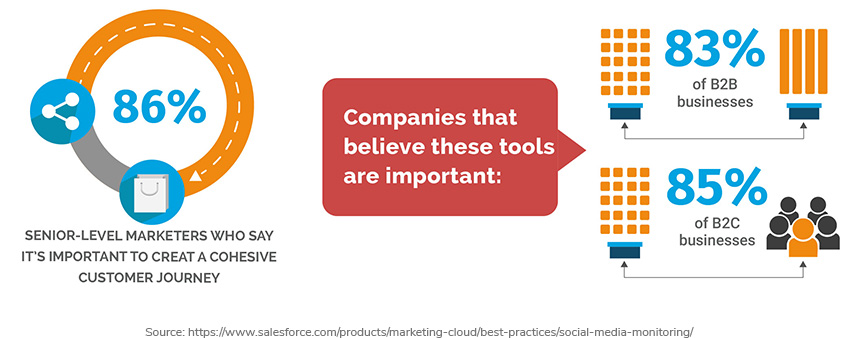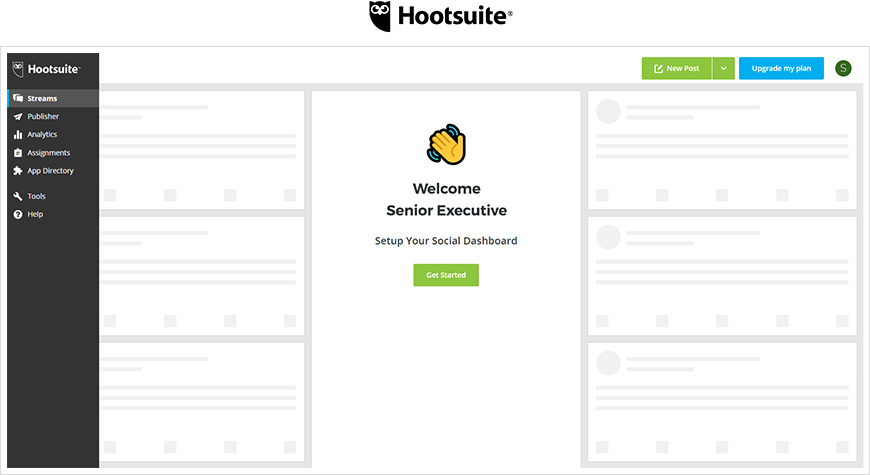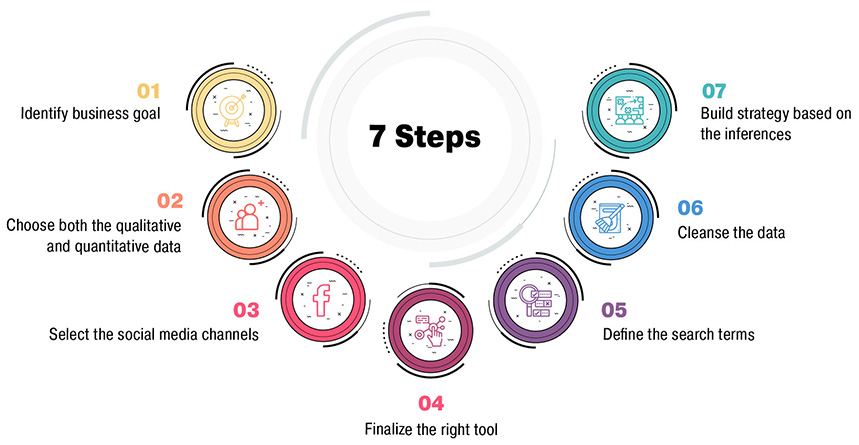Businesses of every size across every sector are suffering from the devastating economic impact of the pandemic. One in five small to medium-sized businesses in the UK won’t survive past August 2020. US minority-owned small businesses have been hit disproportionately hard and may face difficulties recovering.
Retail sales plunged a record 16.4% in April 2020, contributing to the closure of over 25,000 US retail stores this year, 60% of which will occur in malls. Governments across the world have allocated $13 trillion to help stabilize economies and boost regrowth.
As businesses begin to look towards rejuvenation, social media monitoring, and media market research has become an increasingly dependable solution to accelerate recovery and align their marketing strategies with new customer behaviors and changing data sources.

What Is Social Media Monitoring and Social Media Listening
The world is shifting to a mostly digital environment and dependency on virtual experiences is becoming increasingly critical to both B2C and B2B interactions. Companies are turning to Social Media Listening and Social Media Monitoring for deeper insights into their customers to improve the performance of the marketing campaigns and ensure they’re able to deliver what consumers need during these uncertain times.
74% of consumers become frustrated when businesses offer them personally and contextually irrelevant content. With the warning of potential permanent closures on the horizon, organizations need to quickly adopt proven methods of better understanding their customers so they can best align their messages and offerings and rekindle purchasing cycles.
Social Media Listening offers companies a closer look into customer emotions and tones through conversations shared on social media. This works hand-in-hand with Social Media Monitoring, which helps businesses keep tabs on conversations that are happening in connection to specific searchable terms, like product or brand names. It’s an effective way to obtain real-time customer feedback and learn what people think of a company.
How Social Media Listening/Monitoring Tools Work
Social Media Listening and Monitoring tools enable businesses to map out the customer journey across channels and devices. 83% of B2B businesses and 85% of B2C businesses believe in the importance of these tools in helping them develop cohesive customer journeys, which is crucial to success.
HootSuite, SumAll, Mention, and Keyhole are just a few popular beginner tools that can offer a convenient way to listen to and monitor your competitors, audience, trends, and market.

Brandwatch, Sprout Social, and NetBase are more advanced, enterprise-level tools that provide similar capabilities, but often with bonus features and capabilities such as artificial intelligence (AI) to narrow down on search or keyword parameters, or to monitor larger amounts of social media data.
These algorithm-based tools comb through social media data to track individual mentions across different social media platforms and channels to collect targeted insights. This is a task that’s pretty much impossible for marketing teams or analysts due to the volumes of data, the number of channels, the 24/7 timeframes that people post on, and so forth.
With this information readily available, brands can respond more proactively and better tailor their marketing programs in the future.
Benefits of Social Media Monitoring and Research
Consumer spending contributes to 70% of the US economy, and businesses who want a piece of that pie use Social Media Monitoring and Research to uncover new opportunities that wouldn’t be visible through any other resource. This information can lead to numerous competitive advantages and benefits that touch the breadth of an organization – from service development to marketing messaging.
- Business-wide insights: Insights can provide intelligence every team and department across the entire company can use to address challenges or meet goals.
- Empower product and service innovation: Identify customer pain points surrounding products and services so R&D teams can quickly troubleshoot problems and guide future product development.
- Optimize product launches: Monitor and use early feedback for product launches across beta releases or market tests to set up a more successful go-to-market program.
- Increase conversion: Monitoring tools can be used by sales teams to research a prospect’s brand, competitors, and industry for personalization strategies that lead to improved conversion.
- Cut through the noise: Target only the most important mentions on social media, including any variations in terminology that would be otherwise missed with manual methods.
- Identify brand advocates: Identify influencers who are mentioning or tagging your brand’s products, use them for upcoming marketing campaigns, and expand brand visibility to their followers.
- Analyze competitors: Understand customer sentiments towards competitors and join the conversation to introduce your offerings as exciting or viable alternative options.
Strategic Process to do Social Media Monitoring and Research
When it comes to Social Media Monitoring and Research, there’s specific areas to hone and a process that can ensure brands target the right information that will support their marketing strategies and objectives.

Social Media Monitoring tools should be focusing on things like brand names and product names, product reviews, mentions, comments, tags within photos, and brand or industry hashtags, to name just a few. Asking critical questions, like “what are millennials looking for in a shoe brand?” for example, ensures brands get the answers needed for robust insights while unearthing previously undiscovered areas of interest.
Following this, companies should have appropriate teams in place to respond with messages when needed. Also, the collected data can be grouped and categorized to define better existing themes or identify new ones, like certain emotional categories. This helps set the stage for an overall data driven process that works to establish more accurate, reliable, and useful insights.
Next, a company can begin going through analysis to uncover patterns and produce insights that inform decision making and business actions. It also provides understanding into how different marketing campaigns are performing or determine customer levels of brand engagement.
How to Interpret the Social Media Research Data
Effectively interpreting social media research data is arguably one of the most valuable actions any business can take when creating a well-developed, highly personalized marketing campaign.
- Provide specialized content: Use search data to target customers on the platforms they spend the most time and provide them with specialized content that prompts purchasing behaviors.
- Prevent negative brand exposure: Uncover negative press on social media before it goes viral and damages your brand and create proactive PR strategies to ensure customers see only a positive brand image.
- Smarter marketing expenditure: Marketing is often a company’s biggest expense. Brands can prevent wasted marketing expenditure on low-quality leads and better allocate marketing budgets towards lucrative leads.
- Provide excellent customer service: One in three customers use social media to resolve issues or ask for advice. Brands can use social media tools to find consistent customer experience problems and make improvements or engage in direct communication.
- Build brand loyalty: Brands can engage with customers on the right platforms, provide time-sensitive promotions at the right moments, and personalize marketing interactions.
Partner with a Market Research Expert For Accurate Customer Insights
Research Optimus (ROP) has been a cornerstone for brands who need practical, effective market research and analysis services for over fifteen years. With specialized services like media monitoring, customer analysis, and ethnographic research, ROP assists businesses in understanding their consumers better. Our researchers and analysts are vetted in a diverse variety of Social Media Monitoring and Social Media Market Research techniques. This experience and expertise enable ROP to provide the customer-driven insights brands need to make data-centric decisions that inform successful marketing strategies.
-Research Optimus
Disclaimer:All the product names, logos, trademarks, and brand names are the property of their respective owners. All the products, services, and organization names mentioned in this page are for identification purpose only and do not imply endorsement.
-Research Optimus



